Top Rankings
Neenah Joint School District ranks among the top 20% of public school district in Wisconsin for:
Category
Attribute
Community Size
Largest student body (number of students) (Top 1%)
For the 2025 school year, there is 1 public middle school serving 1,941 students in Neenah Joint School District. This district's average middle testing ranking is 7/10, which is in the top 50% of public middle schools in Wisconsin.
Public Middle School in Neenah Joint School District have an average math proficiency score of 39% (versus the Wisconsin public middle school average of 34%), and reading proficiency score of 44% (versus the 36% statewide average).
Minority enrollment is 18% of the student body (majority Hispanic and Asian), which is less than the Wisconsin public middle school average of 39% (majority Hispanic and Black).
Overview
This School District
This State (WI)
# Schools
12 Schools
729 Schools
# Students
6,497 Students
248,238 Students
# Teachers
414 Teachers
17,959 Teachers
Student : Teacher Ratio
16:1
16:1
District Rank
Neenah Joint School District, which is ranked within the top 30% of all 444 school districts in Wisconsin (based off of combined math and reading proficiency testing data) for the 2021-2022 school year.
The school district's graduation rate of 95% has increased from 89% over five school years.
Overall District Rank
#100 out of 450 school districts
(Top 30%)
(Top 30%)
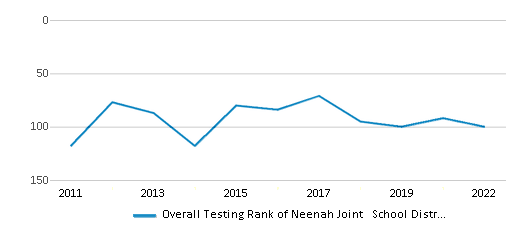
Math Test Scores (% Proficient)
49%
39%
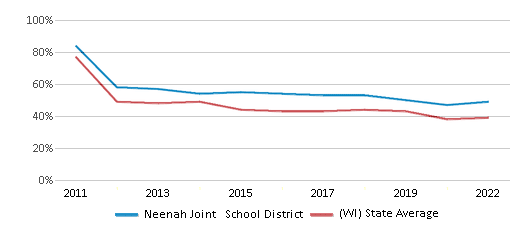
Reading/Language Arts Test Scores (% Proficient)
46%
38%
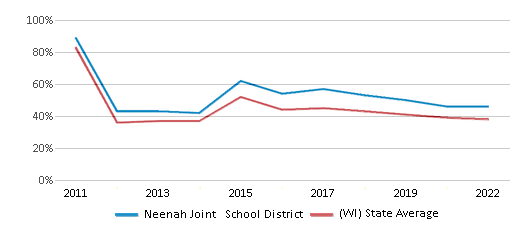
Science Test Scores (% Proficient)
52%
44%
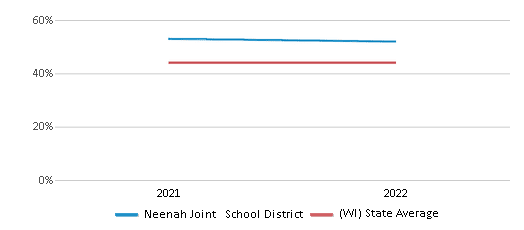
Graduation Rate
95%
90%

Students by Ethnicity:
Diversity Score
0.34
0.59
# American Indian Students
27 Students
3,614 Students
% American Indian Students
n/a
2%
# Asian Students
263 Students
11,285 Students
% Asian Students
4%
5%
# Hispanic Students
468 Students
37,753 Students
% Hispanic Students
7%
15%
# Black Students
184 Students
30,293 Students
% Black Students
3%
12%
# White Students
5,241 Students
152,522 Students
% White Students
81%
61%
# Hawaiian Students
8 Students
174 Students
% Hawaiian Students
n/a
n/a
# Two or more races Students
306 Students
12,537 Students
% of Two or more races Students
5%
5%
Students by Grade:
# Students in PK Grade:
310
6,117
# Students in K Grade:
458
6,551
# Students in 1st Grade:
415
6,827
# Students in 2nd Grade:
504
7,080
# Students in 3rd Grade:
466
7,007
# Students in 4th Grade:
455
8,146
# Students in 5th Grade:
470
14,725
# Students in 6th Grade:
481
48,528
# Students in 7th Grade:
489
57,406
# Students in 8th Grade:
505
59,497
# Students in 9th Grade:
492
7,426
# Students in 10th Grade:
478
5,915
# Students in 11th Grade:
508
6,276
# Students in 12th Grade:
466
6,737
# Ungraded Students:
-
-
District Revenue and Spending
The revenue/student of $15,459 in this school district is less than the state median of $17,039. The school district revenue/student has stayed relatively flat over four school years.
The school district's spending/student of $13,917 is less than the state median of $17,011. The school district spending/student has stayed relatively flat over four school years.
Total Revenue
$100 MM
$13,869 MM
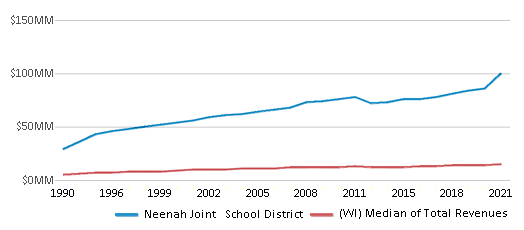
Spending
$90 MM
$13,846 MM
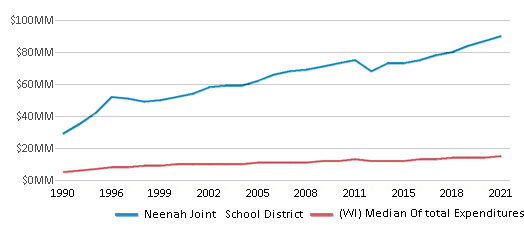
Revenue / Student
$15,459
$17,039
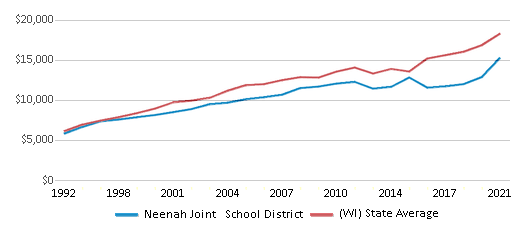
Spending / Student
$13,917
$17,011
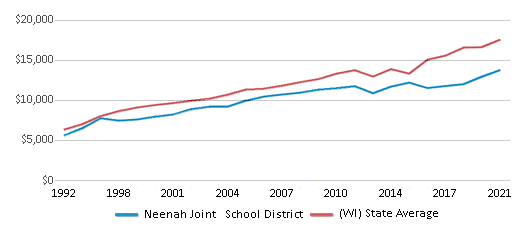
Best Neenah Joint School District Public Middle Schools (2025)
School
(Math and Reading Proficiency)
(Math and Reading Proficiency)
Location
Grades
Students
Rank: #11.
Neenah Middle School
(Math: 39% | Reading: 44%)
Rank:
Rank:
6/
Top 50%10
1275 Tullar Rd
Neenah, WI 54956
(920) 751-6850
Neenah, WI 54956
(920) 751-6850
Grades: 4-8
| 1,941 students
Recent Articles

Year-Round Or Traditional Schedule?
Which is more appropriate for your child? A year-round attendance schedule or traditional schedule? We look at the pros and cons.

Why You Should Encourage Your Child to Join a Sports Team
Participating in team sports has a great many benefits for children, there is no doubt. In this article you will learn what those benefits are.

White Students are Now the Minority in U.S. Public Schools
Increasing birth rates among immigrant families from Asia and Central and South America, combined with lower birth rates among white families, means that for the first time in history, public school students in the United States are majority-minority. This shift in demographics poses difficulties for schools as they work to accommodate children of varying language abilities and socio-economic backgrounds.





